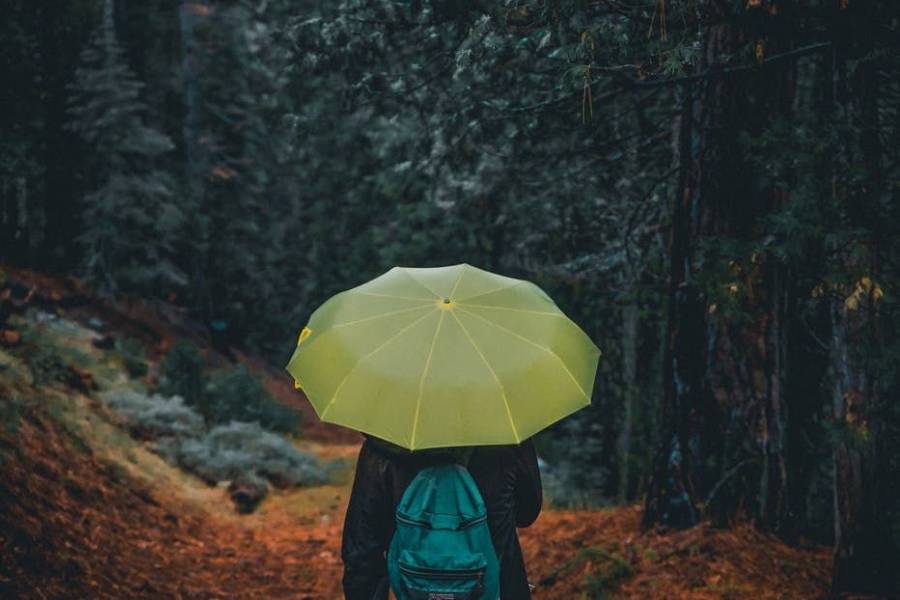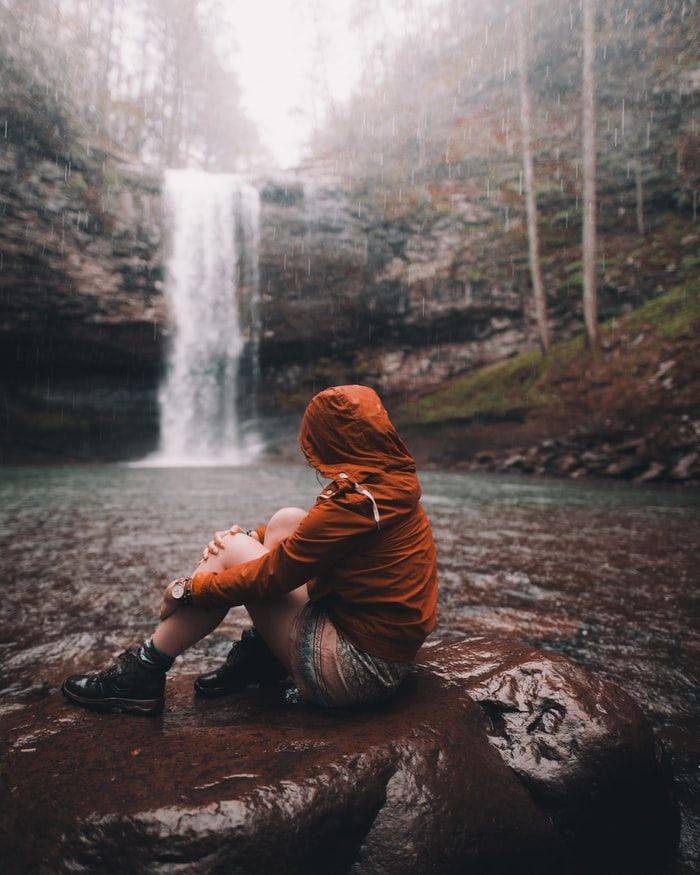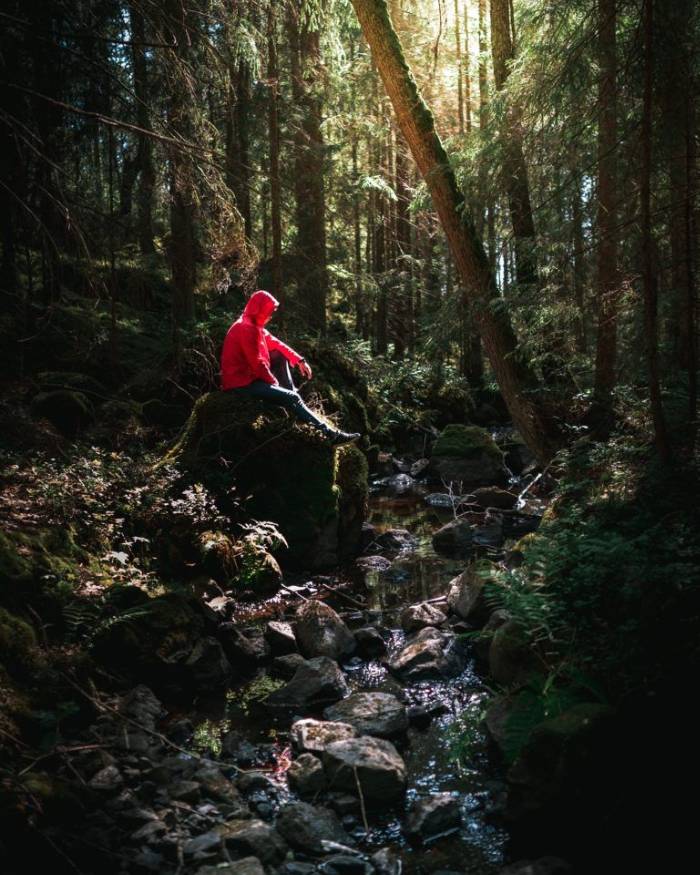
Hiking in the rain is a bit like singing. The dead leaves are picked up by the shovel…
Yes, I know, hiking in the rain is not the most fun part of our practice. Whether or not you have chosen to be soaked, it is important to follow some advice so that an inconvenience does not turn into an ordeal.
I have already walked for several consecutive days in the pouring rain. I went through all the stages:
- Hey, it’s raining!
- it won’t last
- It’s starting to take a while…
- Here it goes through the jacket, it will stop soon…
- But it’s going to stop this damn rain!?!!
- What did I do to deserve this
- Guttural sound mixing hate and despair
After four days of non-stop rain, resignation is there. Without preparations, I might have cracked and given up. However, there are solutions and I am happy to share these few tips that can save you the game.
10 Tips for Hiking in the Rain
We must necessarily be attentive to the elements that surround us. Nature is always a great lesson in humility. The melon, we forget! Let’s see our 10 pro tips on hiking in the rain step by step…
1. Watch the weather forecast
The first thing to do regardless of the weather at home is to check the weather forecast for the area where you plan to hike. Forget the forecasts of general news channels and avoid basic Google or iPhone applications as much as possible. Based on large-scale models without real downstream expertise, these forecasts are often too vague, even inaccurate, especially in the mountains.
Favor regional weather! We advise you to go into detail and consult the temperatures felt, the risks of lightning, landslides, or any other specificity specific to the landscapes you are going to cross.
2. Choose your trails
Do you hike in the forest or the mountains? If you walk in the forest, it will not have the same impact as if you walk in the mountains. In the forest, you can almost go there with your eyes closed. At worst, you will have boiling water everywhere. At best, you will take a good dose of nature!
If you have set yourself a big challenge “I am hiking in the high mountains in the rain”, be aware that the slopes and reliefs can lead to other risks linked to the sudden change in hydrometry: sudden rise in water, runoff in trails, slippery and dangerous crevice edges. Then plan a technically simpler route that does not have all these characteristics.
3. Always let someone know when hiking
Before embarking on your hike, share your detailed plans with a trusted friend or family member. Include your chosen trail, expected duration, and estimated return time. This precaution ensures that someone is aware of your whereabouts in case of unforeseen circumstances Always take the security numbers contact with you (police, fire, mountain rescue, etc.)
4. Choose the right equipment
Your waterproof and breathable jackets are to be dry because the humidity is conductive. Apart from the inconvenience caused, the risk of being hypothermic is not negligible. A waterproof jacket and overtrousers are two must-haves. They are often very light and easy to slip into a backpack. Some overtrousers are even equipped with zippers along the calf, so you can put them on over the shoe without taking off your shoes.
After the rain, if you want to store your wet jacket in your bag, remember to fold it, roll it up in its hood, and place it in a plastic bag for even more security.
Regarding the upper body, two preferences emerge: there are enthusiasts of the poncho, and there are those who favor the jacket. The poncho offers the advantage of shielding both you and your bag. Nevertheless, in windy conditions, it swiftly becomes inconvenient, potentially obstructing your vision and impeding your ability to see where you are stepping.
The jacket does not protect your bag but it gives you great freedom of movement. In this case, remember to protect your bag with a rain cover. Sweater, fleece, or down jacket: try recycled fleeces or your grandmother’s old fleeces. They do the job perfectly, and eco-responsible hiking is also a business that concerns us.
For underlays: especially AVOID cotton! This material tends to accumulate moisture and therefore is not ideal for keeping you dry. We will favor the first technical layers with high drying capacities.
Shoes must be waterproof, they will keep your feet dry. This is very important to prevent them from macerating and especially from seeing blisters appear. If they are not high and you do not have pants, the installation of waterproof gaiters can be practical.
Unlike the rain hood, the waterproof hat has the advantage of allowing good visibility and sparing the face from drops. And it can also be reused in summer to protect you this time from the sun.
Think of the gaiters, themselves in waterproof fabric, they will come to cover your shoes. They are also very useful in dry weather when walking on wet grass. Indeed, if it is higher than your shoe, the water will drip blades of grass toward the inside of your shoe. Ideally, pack your belongings in plastic bags.
To maintain good vision and avoid water running down the neck, you can wear a peaked cap under your hood which will wick water forward. It may seem surprising but an umbrella remains a good complement to your outfit. It is also a must in some countries subject to heavy monsoon rains where showers and high temperatures make it the perfect accessory to stay dry without getting too hot.

On a trek of several days where the weather is more difficult to anticipate, remember to store your belongings in waterproof pockets. Since the distances covered in the rain may seem longer, you can also bring waterproof hiking pants.
If you have spent your day in the rain and are hiking in a star, remember to dry your belongings for the day for the next day. Even if your first instinct will be to meet basic needs such as eating or resting, take a few minutes to hang up or lay your things flat and sheltered from a possible downpour during the night. If by bad luck you got the inside of your shoes wet, remember to remove the insoles of your shoes, loosen your laces and above all avoid putting them too close to a heat source or risk deforming them and having pain on the feet the next day!
5. Make a proper shelter
Get a double-walled tent with the inner canvas hanging from the outer one. You can mount it without soaking the inner part, in which you are going to take shelter. A backpacking tarp is very good but being able to take refuge in a closed shelter will still seem more fun to you.
6. Protect your hardware
If the priority is to protect you in case of rain, also think about your equipment. In general, you will have a waterproof bag on you. But if it does not present absolute waterproofness, you will then have to think about protecting your personal belongings.
Provide a waterproof cover for your bag. Inside, you will always have spare dry clothes on you to change into in case of stages or long returns by car after your hike. It will be then necessary to isolate these clothes in waterproof pockets. Likewise, all your electronic devices should be protected in waterproof pouches.
7. Dry your gear if get wet
Dry and air your sleeping bag and your clothes at the slightest ray of sunshine. It is very important to pause as soon as he comes up. If you’re soaked and you can’t dry your wet gear, there’s a good chance your adventure will end quickly… If you’re cold, you’re putting yourself in danger of hypothermia.
8. Listen to your body
Who says rain says cold? If the wind and the altitude get involved, the perceived temperatures can quickly drop. You will then have to listen to your body. Watch for chills, fingers struggling to move, blue lips, and fingernails. All of these signs point to hypothermia. In this case, take shelter and change, cover yourself as much as possible, and try to eat.

Often, the rain and the cold reduce the feelings of hunger and thirst. However, it is under these conditions that we most need calories and hydration. Remember to drink and especially to eat.
9. Take a rest
If the weather is nice and walking in the rain and mud has made you tired, take the opportunity to rest. Stay part of the day in the tent, warm reading.
A small town nearby?
Make a detour and take the time to decompress, to dry your things in a laundromat. You don’t have to swallow big mileage every day. Take care of yourself, save yourself.
10. Do not hesitate to turn around
If you see that the conditions are too dangerous or your body is struggling to withstand the rain and cold, you should never hesitate to turn back. Similarly, if the rain is not dangerous on controlled terrain, the storm on the other hand is the enemy of the hiker. Pay attention to rumblings. Count the number of seconds between the appearance of lightning and thunder. If these seconds decrease, then the storm is approaching you… You will have to quickly take shelter.
Avoid open plateaus, trees, and metal objects. The ideal remains the car, its structure is designed as a Faraday cage, capable of dispersing electricity. And of course, even if it does not protect against the rain, consider taking headlamps or adapting to different supports to be seen even from afar.
Conclusion
Putting on wet socks in the morning, and walking all day in the rain… sucks! But remember that if you only walk in good weather, you risk missing quite a few hiking days in the year and as many spectacles as only the rain offers: smells, waterfalls, salamanders, the pleasure of being in the dry…
Walk in the middle of nature and smile, the search for freedom is strewn with difficulties that a single step (in the mud) is sometimes enough to overcome. Whether for a short hike or a long day of hiking, now you’re ready to face the rain!